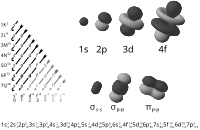
Photo from wikipedia
Abstract This work presents theoretical and experimental analyses on a shell and shell heat exchanger assisted by two-phase thermosyphons. This heat exchanger consists of two adjacent cylindrical shells that enclose… Click to show full abstract
Abstract This work presents theoretical and experimental analyses on a shell and shell heat exchanger assisted by two-phase thermosyphons. This heat exchanger consists of two adjacent cylindrical shells that enclose a bank of two-phase thermosyphons. A prototype was built and tested as a water cooler for oils with different ranges of viscosity. A theoretical model is developed to predict the heat transfer rate. It combines the Bell-Delaware method for the shell side, the equivalent thermal circuit model for the two-phase thermosyphon and a proposed thermal coupling algorithm. The prototype was tested for several mass flow rates and inlet temperature levels of commercial thermal oil and a very viscous petroleum sample. Comparisons between the proposed model and the experimental data showed that the proposed model can predict the experimental heat transfer rate with an overall root mean square error of 20%, despite the use of literature correlations for the Nusselt number of a cross-flow over a tube bank out of their Prandtl number range, as very viscous fluids were tested.
Journal Title: Applied Thermal Engineering
Year Published: 2020
Link to full text (if available)
Share on Social Media: Sign Up to like & get
recommendations!